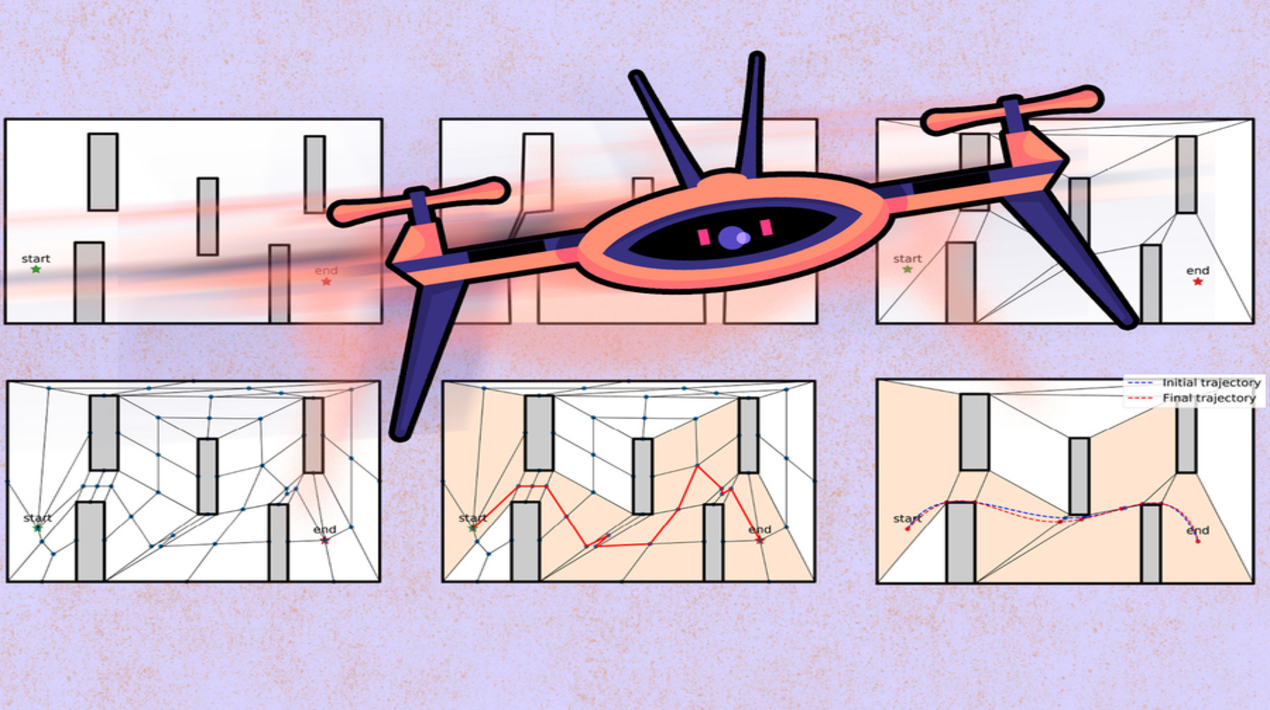
In autonomous drone racing, the number of crashes is as much as the wins. Teams compete to see which vehicle is better trained to fly fastest through an obstacle course. But the faster drones fly, the more unstable they become, and at high speeds, their aerodynamics can be too complicated to predict. Therefore, crashes are a common and often spectacular occurrence. If they can be pushed to be faster and more nimble, drones could be put to use in time-critical operations beyond the racecourse, for instance, to search for survivors in a natural disaster.
Recently, U.S. aerospace engineers have devised an algorithm that helps drones find the fastest route around obstacles without crashing. The new algorithm combines simulations of a drone flying through a virtual obstacle course with data from experiments of a real drone flying through the same course in a physical space.
The researchers found that a drone trained with the algorithm flew through a simple obstacle course up to 20% faster than a drone trained on conventional planning algorithms. Interestingly, the new algorithm didn’t always keep a drone ahead of its competitor throughout the course. In some cases, it chose to slow a drone down to handle a tricky curve or save its energy to speed up and ultimately overtake its rival.
At high speeds, there are intricate aerodynamics that are hard to simulate, so the researchers use experiments in the real world to fill in those black holes to find, for instance, that it might be better to slow down first to be faster later. These kinds of algorithms are a very valuable step toward enabling future drones that can navigate complex environments very fast.
Training drones to fly around obstacles is relatively straightforward if they are meant to fly slowly. That is because aerodynamics such as drag do not generally come into play at low speeds, and they can be left out of any modelling of a drone’s behaviour. But at high speeds, such effects are far more pronounced, and how the vehicles will handle is much harder to predict.
To get an understanding of how high-speed aerodynamics affect drones in flight, researchers have to run many experiments in the lab, setting drones at various speeds and trajectories to see which fly fast without crashing — an expensive, and often crash-inducing training process. Instead, the team developed a high-speed flight-planning algorithm that combines simulations and experiments, in a way that minimises the number of experiments required to identify fast and safe flight paths.
To demonstrate their new approach, the researchers simulated a drone flying through a simple course with five large, square-shaped obstacles arranged in a staggered configuration. They set up this same configuration in a physical training space and programmed a drone to fly through the course at speeds and trajectories that they previously picked out from their simulations. They also ran the same course with a drone trained on a more conventional algorithm that does not incorporate experiments into its planning.
Overall, the drone trained on the new algorithm won every race, completing the course in a shorter time than the conventionally trained drone. In some scenarios, the winning drone finished the course 20% faster than its competitor, even though it took a trajectory with a slower start, for instance taking a bit more time to bank around a turn. This kind of subtle adjustment was not taken by the conventionally trained drone, likely because its trajectories, based solely on simulations, could not entirely account for the aerodynamic effects that the team’s experiments revealed in the real world.
The researchers plan to fly more experiments, at faster speeds, and through more complex environments, to further improve their algorithm. They also may incorporate flight data from human pilots who race drones remotely, and whose decisions and manoeuvres might help zero in on even faster yet still feasible flight plans.
















